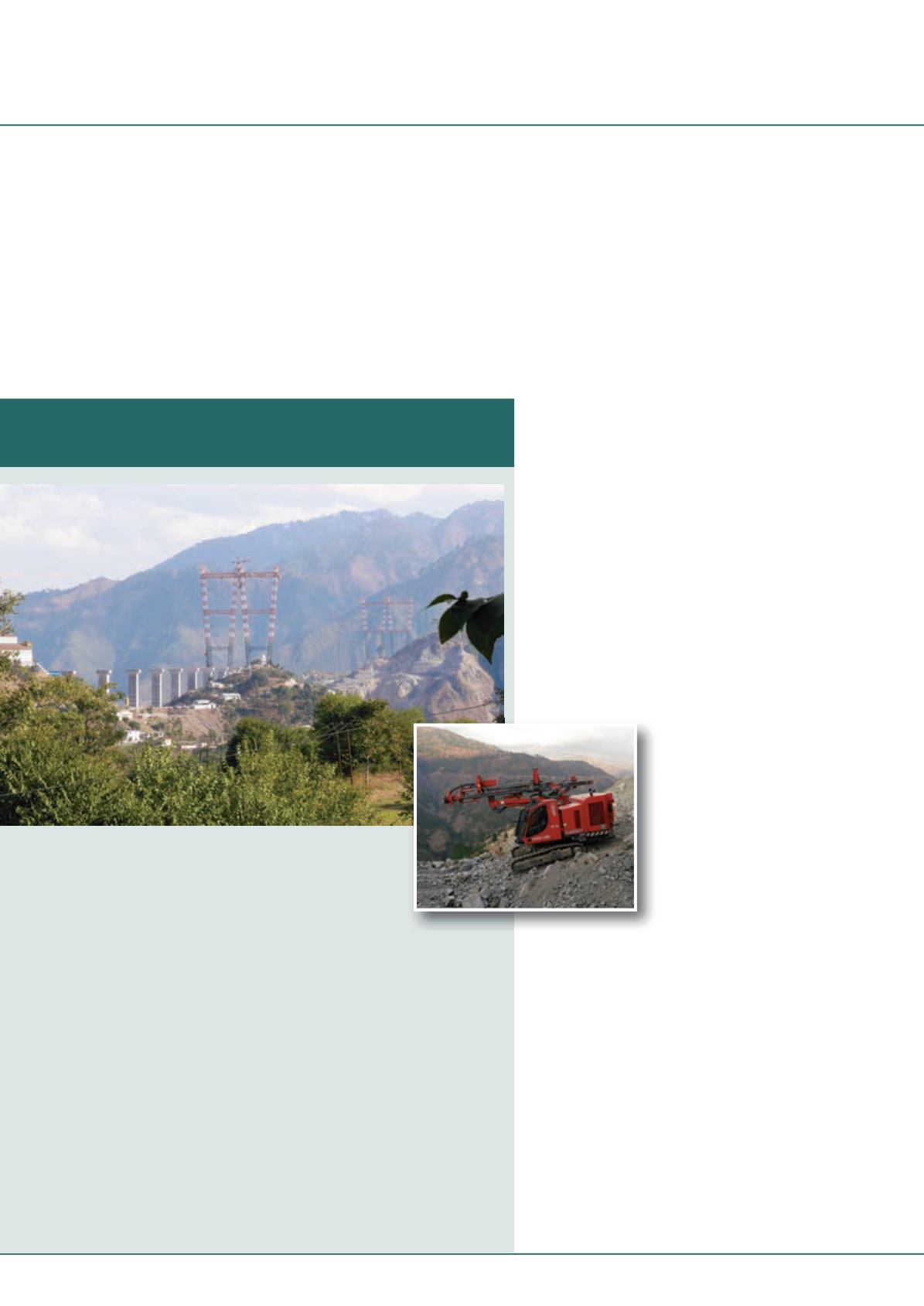
international
construction
april 2014
REGIONALREPORT: INDIA
28
Election hopes
Highways Authority of India (NHAI), which was in charge of
the National Highways Development Project (NHDP) to link
India’smajor cities.
Road building is still a big part of the construction landscape
in India, but the focus now is more on the latter phases of the
NHDP.These tend to bewidening projects and the completion
of ring roads aroundmajor cities, rather than the long-distance
greenfield projects of the past.
In fact the diversification of the Indian infrastructure market
has a particularly strong urban focus, as cities grow and struggle
to copewith increasing numbers of people and traffic.
Metro schemes are big news in India at the moment. By
far the largest is the Delhi Metro, which currently stands at
190 km, with 141 stations.The ultimate vision for the scheme
is to connect the all of the cityDelhi and its adjoining areas by
2021. If the planned Phases III and IV go ahead, they will add
260 km of tracks and seeDelhi enter the global top 5 cities for
the length of itsmetro network.
India’s urbanisation has other impacts on the need for
infrastructure. For example, one of themost challenging urban
tunnelling projects anywhere in the world at themoment is the
Mumbai Water Tunnel, which is designed to supply drinking
water to India’smost populous city.
January saw the breakthrough by a 6.25m diameter Robbins
Main BeamTBM on an 8.3 km section of the tunnel. One of
the greatest challenges for the joint venture contractor, Unity-
IVRCL (UIJV), was the sheer depth of the tunnel – 109 m
underground – however, it set new records for advance rates.
Pravin Titare of Unity said, “The TBM was very safe in the
adverse geological conditions.The rock support system and ring
beam erector were helpful to reduce downtime and allowed us
more production time.”He continued, “TheRobbinsTBMwas
good in hard rock, and we reached high
rates of 870m per month and 58m per
day, both records for TBM tunnelling in
India. We were able to achieve this due
to the good performance of themachine
and a conveyor system for muck haulage
in place of conventional methods.”
Now completed, the water transfer
tunnel
will
provide
Mumbai’s
approximately 20.5 million residents
with a consistent flow of clean drinking
water, evenduring the seasonalmonsoons
that formerly contaminated the city’s
water resources.
And growing urban populations mean that many of India’s
once sprawling, low-rise cities are seeing new tower blocks
added to their skylines.
For example, a new real estate and construction company
Suvilas Properties & Construction has started work on its
signature Suvilas Royal Guardenia development.The 10-storey
(plus basement) development in Bangalore is being built to a
high specification with modern equipment and techniques,
which are areas chairman&managing director Sunil Chavdory
spent four years researching, before setting up the company in
2011.
The Suvilas Royal Gardenia features 72 three- and four-
bedroom intelligent and luxury apartments ranging up to a
maximum of nearly 400m
2
in area. Hallmarks of the structure
include thick floor slabs and solid masonry walls, along with
high ceiling heights.
The main workhorse for construction is a Liebherr 85 EC-
a key area of debate, with pledges of improvements from both
sides. The BJP says it will free the backlog of major projects
in India, which it says has built up due to the paralysis of the
current administration.
The INCmeanwhile would point to recent initiatives byMr
Singh to fast trackkeyprojects, such as the settingupof a special
cabinet committee, which claims to have green-lighted schemes
worth5%ofGDP in the run-up to the election announcement.
Major projects
The scope formajor constructionprojects in India iswider than
it once was. The major schemes of the last decade tended to
be road building projects under the auspices of the National
D
uring thewinter, the population of the city of Jammu swells,
asmany leave Srinagar, the state capital of in the state of
Jammu& Kashmir, in search of milder weather. However,
the 300 km journey takes some 10 hours along a narrow and isolated
road, which is often impassable due to torrential rain and avalanches.
A new rail link is being built to cut the journey time to 8 hours and the distance to
250 km, and themountainous terrainmeans there are bridges and asmuch as 220 km of
tunnels to be constructed ahead of the 2020 opening date. In addition to this, the project
will see the construction of one of the highest clearance railway bridges in theworld over
the River Chenab.
The total length is 1,315m, with a 480m central trussed arch span standing some
360m above the surface of the river. It will carry a 14mwide twin-track deck and has
been designed towithstandwind speeds of 264 km/h and temperatures as low as -20°C.
Themain contractor for the US$ 92million project is Afcons Infrastructure, and one of the
key areas for the company is the stabilisation of the ground ahead of foundationwork.
The company is using two SandvikDX800 surface top hammer drill rigs to create terraces
in the steep terrain, and drill horizontal holes that can then be grouted to stabilise the
excavation. The rigs have to be able to handle steep and uneven terrain, and undertake a
variety of tasks, from pre splitting, drilling blast holes and drilling holes for rock bolts.
“Wewere searching for equipment with a high production rate andwhich could drill
inclined holes up to 6 to 8m under very difficult and extreme conditions,” said Afcons
deputy general manager of construction plant andmachinery, NatrajanGanesan. “Sandvik
came and presented a solution to all these problems.”
Terrain challenge
The difficulties of building a rail line in theHimalayas
>


